Harbingers of Spring
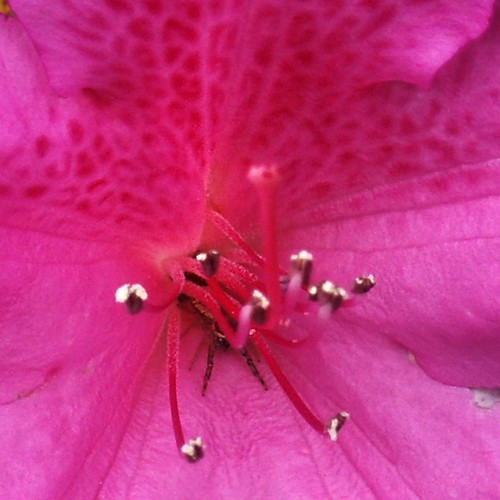
This blossom was set very close to the narrow concrete walkway between our hedge and the yard. I believe that's a bee crouched beneath the stamens; I didn't see it until after I'd downloaded the shot. A stereoscopic view is here.
Our highs have been reaching into the 80s, lows in the 50s. Soon we'll switch the sheets covering the couch from dark-colored to light....
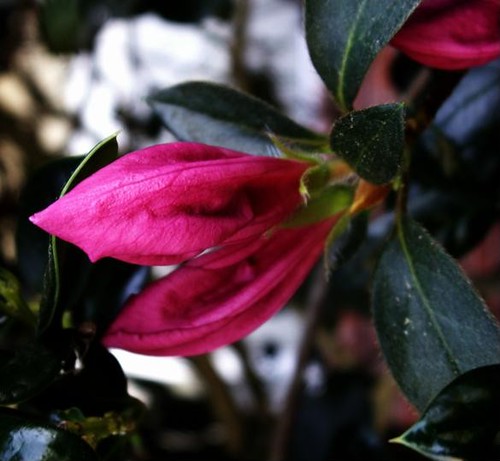
I had photographed these azalea buds in our front hedge back on the 7th. Almost everything is leafing out now -- in a few short days the trees have gone from bare branches to bright wraps of spring green leaves. I've gone almost instantaneously from sweaters to T-shirts.
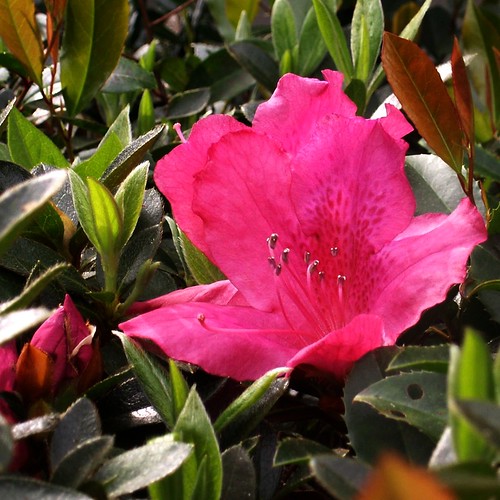
The azaleas had surprised me three years ago. When my parents lived in this house I had not visited them this time of year, so had never seen the flowers. Mary and I had arrived on March 15, 2003, after a night in our rental van with her at the wheel. We pulled into the driveway at 5 AM and went almost immediately to bed after settling in with the cats. When I awoke, the azaleas were waiting for me, in full bloom. It was a wonderful welcome.
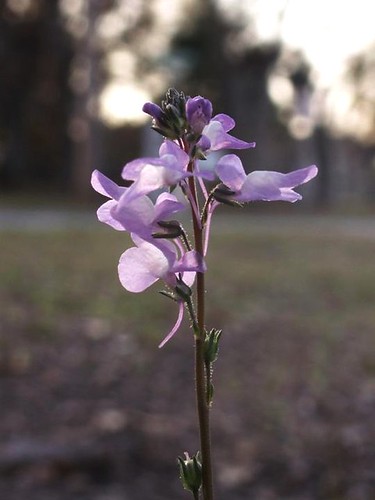
There are several varieties of toad flax. I'm guessing this one is the Spurred Snapdragon (Linaria maroccana, Family Scrophulariaceae). No spurs are visible in this shot, but they are on the plant. Its blooming period is March through June, so this one is right on time.
The flower here was growing on a grassy median along one of the main roads. According to the Aggie Horticulture Network of Texas A&M University (which got its info from Wildseed Farms), this plant is native to Morocco but has naturalized throughout the United States. Its tiny flowers range in color from yellow, red, and pink to white or purple.
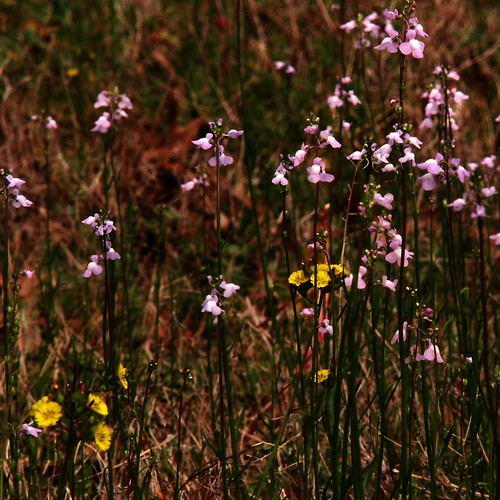
I took this shot in our front yard, where our own snapdragons share space with yellow buttons.
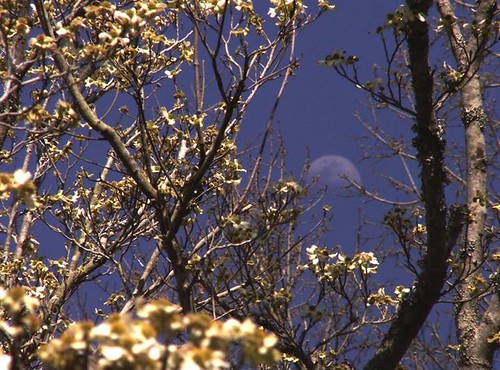
I believe these are dogwood blossoms. Mary and I were headed to the post office on the 7th when I spotted them.
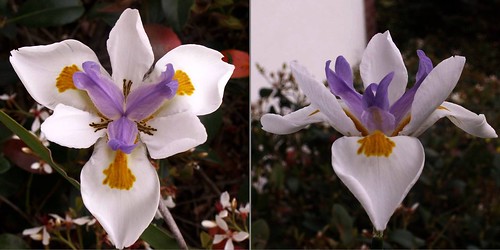
I think this is an Indian grass flower, because it rises every spring out of what the local nursery folks called "Indian grass" when they planted it. Clumps of tall blades comprise the plantings. The foliage in the background here are from Indian hawthorne. From what I've found on the Web so far, "Indian grass" can mean any number of species in the genus Sorghastrum.
Update, 13 April 2007: I finally found the true ID of this flower: African Iris. Dietes iridioides, also called "fortnight lily" and "morea iris." Member of the Iridaceae (Iris) Family.
I at first thought this was a flower from Indian grass, because that's what I thought was being planted in our yard. That may well have been, with seeds for this iris coming courtesy of the birds.
"Fortnight lily hails from Kenya and eastern Africa ranging south to South Africa at the tip of the continent," according to Floridata.com. "These are evergreen perennials with spreading fans of stiff, leathery sword shaped leaves up to 2 ft (0.6 m) in length but only 0.75 in (1.9 cm) wide. The upright clumps of leaves are held in a vertical fanlike plane and they spread on creeping rhizomes which sometimes ascend a few inches." (end of update)
This past Monday I participated in my first professionally-judged photo contest held by our local camera club. "Sun Catchers" (also shown in this entry) received a Third Place ribbon, so I was quite pleased! Now that I know whom to see for printing and framing I'm having a few photos prepared for next month's show at the art league gallery.
I've had the treat of having this weekend off (except for teaching, which is really "play" for me), and am about a third of the way through the large transcription job. I can't say anything about it except that I'm enjoying its fascinating, multilayered material. More than a decade ago I made the mistake of taking on a job that required very quick turnaround -- the tapes were delivered to my door at 6AM and by noon I was faxing off a transcript of conference proceedings. In doing so I had given myself carpal tunnel syndrome -- I knew immediately what it was and bought myself a wrist brace before confirming my self-diagnosis at the clinic. Fortunately, my quick action aided rehabilitation and I now build in breaks during long typing jags.











1 Comments:
Congratulations on the ribbon! It's a striking shot, too. The light almost mystical in its prismatic brilliance.
These flowers are wonderful. There is no colour in the world like the colour of flowers and your post delights with masterpieces of the paintbrush of Nature...
Post a Comment
<< Home